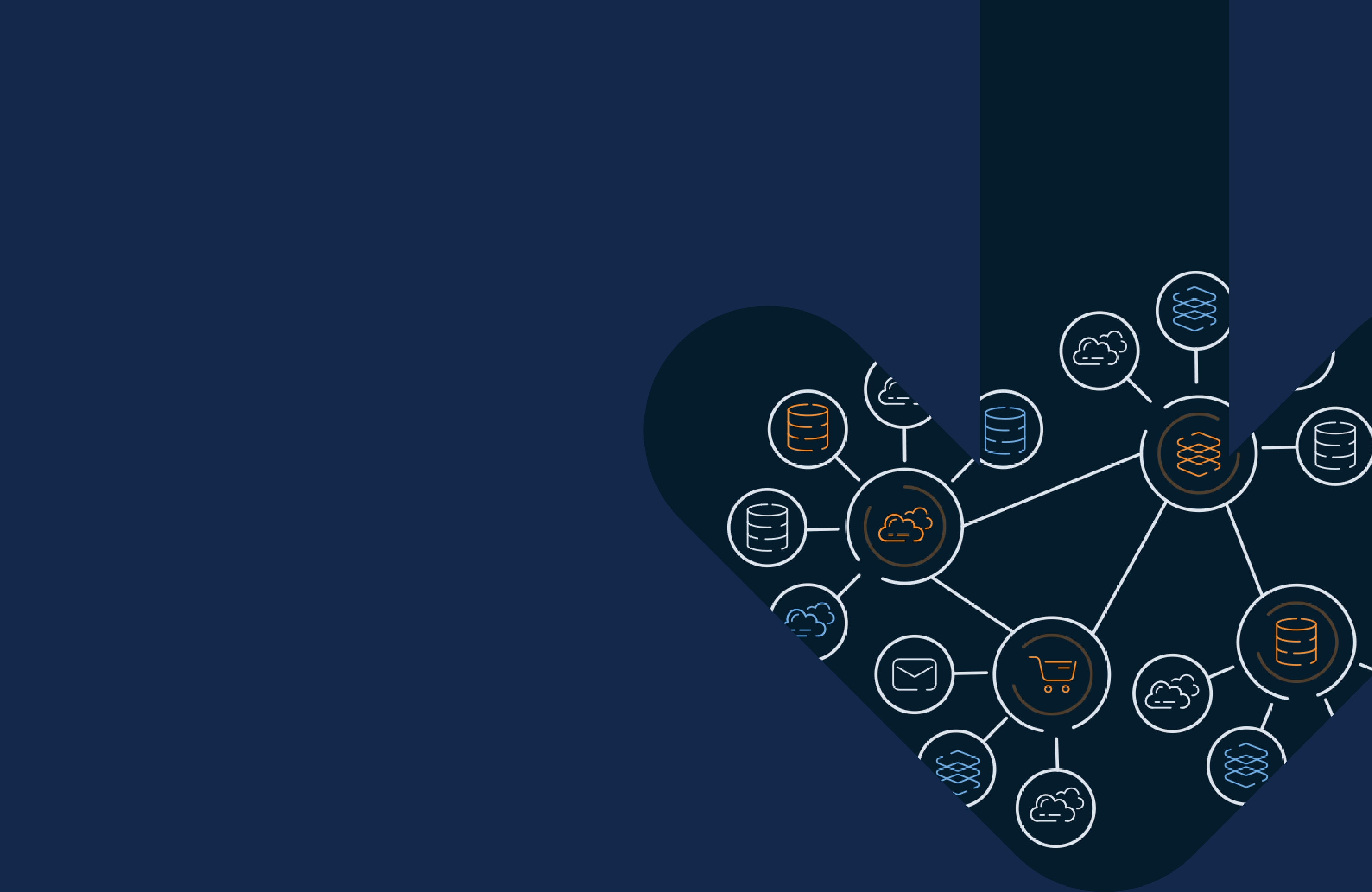What is a data clean room?

What is a data clean room?
Data is a cornerstone of success across industries in today's digital landscape. As consumer expectations evolve and privacy regulations tighten, the significance of first-party data cannot be overstated. This page is a comprehensive guide to Data Clean Rooms - a transformative solution for businesses aiming to unlock the true potential of their first-party data.
What is a Data Clean Room?
A Data Clean Room is a secure and privacy-centric environment that enables collaboration between multiple parties using first-party data without ever sharing it. Unlike traditional methods that involve sharing sensitive information, data clean rooms prioritize data protection, enabling analysis and insights while mitigating risks associated with data exposure.
A data clean room provides insight at an aggregated and anonymized user level to protect consumer privacy while providing advertisers with non-personally identifiable information (non-PII) to target a specific demographic and for activation and measurement.

What are the different types of data clean rooms?
Data clean rooms come in various shapes and sizes, each designed to cater to specific business needs and goals. However, when analyzing these various solutions, it is important to draw a distinction between data clean rooms and other technology within the adtech and martech stack that are often complimentary.
Data Clean Rooms:
Data Clean Rooms are decentralized and independent environments facilitating fast, secure, and efficient data collaboration. Tailored for multi-party collaborations with no data movement, these clean rooms prioritize robust privacy controls. Their decentralized nature ensures that sensitive information remains secure, offering data protection crucial in today's privacy-centric landscape. These environments are well-suited for any business or user type engaged in extensive data collaboration, providing a seamless and secure environment for data collaboration across the data tech stack.
InfoSum provides the only true data clean room that offers sufficient privacy and security protection while remaining 100% neutral and independent and offering the flexibility required to deliver a modern data collaboration strategy. Other solutions, often bucketed under the data clean room banners, provide other functionality that can complement a data clean room.
1. Cloud Storage & Infrastructure
Cloud storage and infrastructure focus on continuously storing and managing first-party data. These platforms enable comprehensive access and utilization of proprietary assets, which is crucial for powering downstream strategies. However, they present limitations in ease of use and flexibility. The high operational costs of maintaining enterprise technology infrastructure can also be a significant drawback. Businesses considering these platforms should weigh these factors against their specific needs, especially operational efficiency and cost-effectiveness, to ensure they align with their broader data strategy and objectives.
2. Data Warehouse and Data Lakes
Data Warehouse and Data Lakes provide direct access to first-party data, enabling comprehensive SQL analysis. These solutions are known for their extensive network of integrated app partners and customizable features, offering a robust toolkit for data manipulation. However, they may face limitations in facilitating beyond one-to-one collaboration and cross-region support. Businesses that prioritize hands-on customization and have specific analytical requirements might find Data Warehouse and lakehouse solutions particularly beneficial for their data strategy needs.
3. CRM, CDP and Identity Platforms:
CRM, CDP, and Identity Platforms focus on centralizing adtech data to execute tasks such as matching, segmentation, and measurement using proprietary identity resolution and legacy CRM tools. While these platforms serve specific purposes, they lack a marketer-friendly interface or multi-party collaboration support. Additionally, their level of privacy protection does not match that of specialized clean room solutions. Businesses leveraging CRM, CDP, and Identity Platforms should carefully evaluate their marketing requirements against the functionalities offered by these platforms to ensure alignment with their privacy and collaboration objectives.
4. Data Science and Query Software:
A lightweight analytical interface that provides a marketer-friendly user interface, advanced SQL capabilities, and flexible API integrations. However, it operates by sitting atop other databases or clean room infrastructures and lacks direct data activation and robust privacy controls. This category is characterized by its ease of use for marketers and data scientists, enabling them to interact with the data through an automated or user-friendly interface.
Executing a fit-for-purpose data collaboration strategy requires careful consideration of all partners or platforms' privacy, governance, and compliance considerations. To ensure end-to-end protection without sacrificing performance, businesses must look to neutral and decentralized data clean room solutions to enable the secure flow of enriched intelligence to power all downstream use cases. Understanding the distinctions between each platform or technology layer is crucial for making informed decisions that best suit the unique requirements of each business.
Why use a data clean room?
The rising prominence of data clean rooms stems from a shift in the advertising landscape driven by several converging factors. Traditionally, the industry heavily relied on practices involving the sharing and centralizing of vast amounts of sensitive personal data facilitated by third-party cookies tracking individuals across platforms. However, a shift is underway with the phased deprecation of third-party cookies, led by Apple and followed by Google, in response to growing privacy concerns and regulatory changes like the introduction of the GDPR and CCPA.
High-profile data misuse and leakage incidents have heightened consumer awareness, coinciding with the impending loss of third-party cookies and a renewed emphasis on safeguarding first-party data. First-party data, acquired through direct consumer interaction, has become a critical asset, prompting companies to reject conventional data-sharing practices. With the foundational support of third-party cookies eroding, the advertising industry is witnessing a seismic shift toward prioritizing first-party data and secure data collaboration.
Data clean rooms have become a vital solution in this evolving landscape. These secure environments facilitate matching, collaboration, and execution across first-party data without exposing it to the risks of leakage or misuse. They offer a controlled space for multiple parties to derive insights and analyze without compromising data integrity. True data clean rooms preserve the trust between collaborators and the confidentiality of the underlying data subjects and can evolve with changing privacy regulations and consumer expectations.
Beyond privacy, data clean rooms play a pivotal role in maximizing the performance of data-driven strategies for more precise planning, more impactful experiences, and more transparent measurement. As the marketing and advertising industry moves away from third-party cookies, these clean rooms have become indispensable for sustaining addressability, ensuring regulatory compliance, and meeting the expectations of a privacy-aware consumer base.
How do data clean rooms balance privacy and performance?
Data clean rooms are pivotal in balancing the demand for high-performing marketing, with privacy requirements. By employing privacy-enhancing technologies, data clean rooms safeguard the data of all collaborators, building trust between customers, companies, and even competitors. As data clean rooms inherently prioritize data privacy and security, they allow businesses to focus on making smarter decisions that fuel growth, reduce costs, enhance speed, and mitigate risks.
By enabling compatibility across clouds, regions, companies, and policies, data clean rooms significantly reduce complexity and accelerate the speed of business to deliver more powerful insights to drive smarter decisions.. Additionally, by enabling secure collaboration directly between organizations, data clean rooms ensure greater relevancy, accuracy, and control, striking a perfect balance between privacy and performance.
What are the use cases of data clean rooms?
Data clean rooms have emerged as a versatile tool enabling organizations to reshape how they approach first-party data. Let's delve into the core use cases.
1. Data matching and onboarding
Organizations can enhance their data capabilities by securely connecting their proprietary first-party data to a network of data, media, and identity partners within a data clean room. This secure environment ensures no data exposure, leakage, or misuse, with end-to-end privacy protection and control. Businesses gain complete authority over how their data is connected, with what parties, for what purpose, at what granularity, and for what duration. This includes the selection of specific identity graphs, match keys, and enrichment partners to generate immediate match rates and insights.
This approach eliminates dependency on third-party cookies and other perishable or unstable IDs, augmenting first-party data with deterministic consumer insights across various media and identity graph partners, optimizing performance and scale while upholding stringent privacy standards.

2. Media Planning & Optimization
Data clean rooms revolutionize how marketers plan and optimize their campaigns. By utilizing a single audience, they can seamlessly execute targeting strategies across all funnel stages—upper, mid, and lower—encompassing tactics like retargeting, suppression, and acquisition. This method enables direct collaboration between advertisers, agencies, and media partners, enhancing the ability to identify, build, and refine high-propensity audience segments.
Marketers can also expand their audience reach using in-platform tools or collaborate with third-party providers to develop custom lookalike models. This approach streamlines media planning and optimizes campaign effectiveness by leveraging precise and privacy-compliant data insights.

3. Identity Resolution and Enrichment
Data clean rooms simplify identity resolution and data enrichment, allowing marketers to connect and test their campaigns with various identity and data providers efficiently. One of the key benefits is the ability to mix and match across partners to identify the highest match rates, category fill rates, and relevant consumer attributes. Marketers can instantly identify the best-performing combination of collaboration partners to maximize scale and accuracy while reducing cost and waste.

4. Advanced Analytics and Measurement
Data clean rooms offer a pathway to unlocking deep insights from diverse data sources with full control and transparency. This method integrates first-, second-, and third-party data to effectively measure performance how, when, and where organizations want. A key feature is the ability to verify audience performance by conducting closed-loop analysis to determine incremental lift due to ad exposure. Data clean rooms safely connect media exposure data with outcome data (like conversions or transactions) without ever sharing or exposing the underlying data. Organizations can have the freedom and flexibility to perform advanced analytics within the data clean room or safely in their own analytical tools or third-party providers.
InfoSum offers no code, low code, and pro code functionality to enable any user to extract powerful insights regardless of technical experience or know-how. Businesses can perform fast, efficient analysis without complexity using drag-and-drop functionality and an intuitive query engine.
Data Clean Rooms allow marketers to test, learn, and adjust identity, audience, and campaign strategies before executing to save time and money while maintaining a high standard of privacy and security.

What are the limitations of data clean rooms?
Data Clean Room Interoperability
Interoperability refers to seamless collaboration across different technology and data setups. This is challenging due to the varying technology and data stacks businesses use. Despite claims of easy interoperability, collaboration is often limited to the same clean room and cloud provider.
InfoSum addresses this challenge by promoting seamless interoperability through its unique patented Bunker technology, a robust global data schema, our Identity Bridge partners, and Private Path, a step change in privacy-safe data interoperability. Our approach allows flexible multi-party collaboration across any dataset, platform, partner, or tech stack without relying on cookies or a common identifier. By prioritizing privacy and performance, organizations can leverage data in any size, shape, or location for advanced analytics and decision-making, even with varied internal setups and resources.
Data Clean Room Complexity
The perceived complexity and technical expertise required for data clean rooms can be a significant challenge for many organizations. These systems often necessitate advanced data science skills, which not all businesses possess or have readily available.
InfoSum recognizes and addresses this challenge by offering a versatile platform suitable for various skill levels. Our platform ranges from full to no-code options, catering to data scientists and marketing professionals. Data scientists have access to a comprehensive querying tool, while marketers can utilize a user-friendly interface to gain insights, plan campaigns, and measure success efficiently. This approach eliminates the need for additional layers of orchestration over the data clean room, making it more accessible to an organization's broader range of users.
Purposeful Limitations of Data Clean Rooms
Data clean rooms, by design, operate primarily at an aggregate level to protect consumer privacy. While data clean rooms should secure data to uphold the governance and protect the differentiation of individual companies, they should also purposefully obfuscate the underlying customer data subjects, limiting the granularity of insights, the complexity of the queries, and/or the specific applications of the data itself in more complex, data-driven use cases.
However, granular measurement or direct-data enrichment may often be needed in which InfoSum's Private Path addresses these limitations. Private Path enables the secure exchange of enriched intelligence outside the data clean room environment without exposing or sharing Personal Identifiable Information (PII). Using patented point-in-time, nonreversible, synthetic IDs, Private Path maintains always-on privacy protection for richer, more robust data analysis without the risks associated with traditional data sharing methods. This innovation significantly enhances the speed and effectiveness of data-driven strategies in a privacy-focused marketing landscape.
What is InfoSum’s approach to data clean rooms?
InfoSum’s data collaboration platform and secure data clean room leverage patented privacy-enhancing technology to keep our clients, partners, and their customers safe at all costs. Founded on a commitment to privacy by default data collaboration, InfoSum is the only neutral, independent, and decentralized data clean room, empowering data-driven organizations to extend the value and performance of their data with complete ownership, control, and protection.
There are five core components to InfoSum’s approach.
- Data Decentralization: All data processing occurs where the data is located, within the secure Bunker owned and controlled by each collaborator. Data is never combined, comingled, or co-located during the collaboration. All data remains within its own secure environment while enabling instant matching and analysis across multiple datasets.
- Secure Multi-party Collaboration- InfoSum is unique in our ability to run advanced computation across unlimited datasets at rapid speeds and with the highest safety. All data remains fully encrypted, obfuscated, and decentralized within a secure Bunker owned and controlled by the data owners themselves. InfoSum guarantees no sensitive data can ever be identified, leaked, exposed, or misused using our non-movement of data policy.
- Trust and Permissions Controls: Trust is key to secure data collaboration. InfoSum empowers organizations to extract the full potential from first-party data with hyper-granular permission and access controls that define what data can be used, for what purpose, at what granularity, and for what duration down to the key and attribute level. These permissions never grant access to the underlying data and can be retracted anytime.
- Patented Privacy-enhancing Technology: InfoSum leverages patented privacy-enhancing technology to ensure all data is always protected by default. With advanced differential privacy techniques, the privacy of all underlying data subjects is obfuscated These techniques include redaction thresholds, rounding, and noise injection to mask identifiable characteristics. These default privacy settings ensure that even with detailed queries, no single individual can be reidentified, upholding consumer privacy.
- Private Data Network: InfoSum makes it easy to discover and engage directly with a growing network of data, media, and identity partners within a secure, clean room environment. InfoSum provides direct connectivity and choice across ID resolution, enrichment, and measurement providers to streamline and enhance data-driven strategies with full flexibility, Data can be safely exchanged between organizations using our patented synthetic ID process to enable advanced analysis with full protection.
These core components, coupled with quick approvals, enable companies to match, analyze, and activate across datasets in minutes, delivering better data-driven marketing in real time and achieving maximum ROI faster.
What results are being generated by data clean rooms?
Having worked with over 200 global organizations, InfoSum’s data clean room delivers transformative results in various industries.
Channel 4 and Nectar360, the loyalty card program of Sainsbury’s, launched RET4IL, leveraging combined data intelligence to target audiences at scale. This collaborative effort with CPG partners like McVitie’s, McCain, Pepsi, Walkers, Garnier, and Weetabix yielded remarkable outcomes. The campaign delivered an impressive sales uplift, up to 122%, with an average uplift of 29% across all partners. Notably, product-focused creatives saw a substantial 56% uplift.
ITV's collaboration with a challenger bank for a campaign across ITVX exemplifies the tangible benefits of data clean rooms. By comparing advertising exposure data to app download data, ITV demonstrated an 18% lift in downloads generated by the campaign.
Renault's campaign with Axel Springer All Media further substantiates the power of data clean rooms. The comparison between a first-party data strategy and traditional third-party cookie targeting revealed compelling results. The first-party data campaign outperformed cookie-based targeting, boasting an 18% increase in conversion rates, 38% improved target profiles, a 15% lower cost per action, and a 19% lower cost per click.
Deliveroo and Channel 4 collaborated using the InfoSum Secure Data Clean Room to plan, activate, and measure a national advanced TV advertising campaign. Notably, this collaboration occurred without sharing or exposing their data. By leveraging their first-party data securely, Deliveroo and Channel 4 accurately calculated the incremental impact of the campaign. The result was a substantial 20% increase in app sign-ups.
In another collaboration between UK bank TSB and audio platform Global, TSB leveraged InfoSum’s data clean room technology to seamlessly match its 5 million UK customers against Global’s audio audience of 51.7 million. The outcomes were remarkable, with a 31% increase in applications to its Spend and Save account, a 31% increase in the likelihood of switching banks or building society, and a 38% increase in those considering switching to TSB.


























